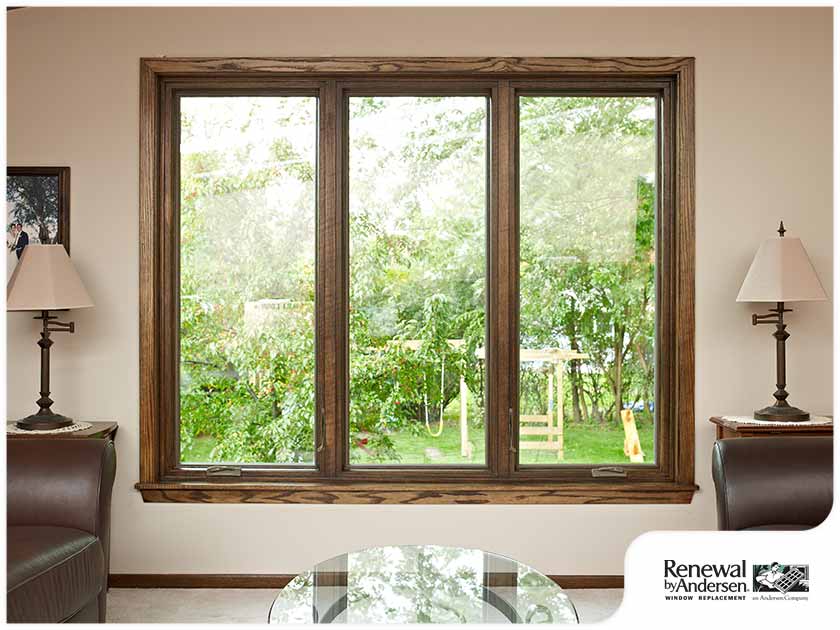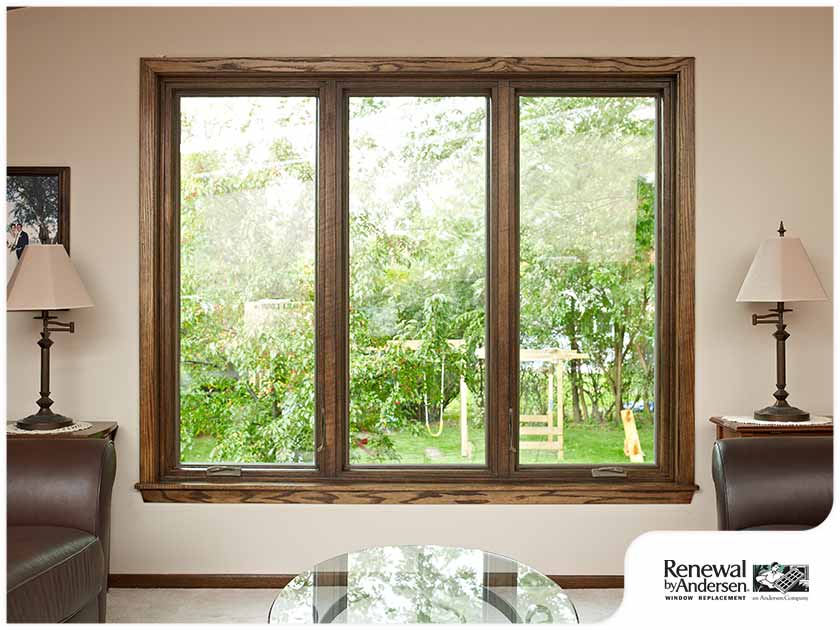MENU


From convenient sliding windows to large and expansive bay windows, almost all modern replacement windows all use double panes for their glass components. As its name suggests, double-pane windows are built with a thin and invisible layer of inert gas sandwiched between two glass panes. The gas layer is what separates the double pane from its single-pane counterparts. This layer helps improve the insulating ability of the glass, improving your energy efficiency, reducing condensation problems and keeping your windows from fogging up even against stark temperature differences between your interiors and the outdoors.

Because double-pane windows are built differently than any other type of window, they can be prone to a unique set of problems. One common issue that many double-pane users experience is discoloration. Discoloration can be caused by a number of things and is often a sign that signifies the presence of a more serious problem.
Discoloration can appear in many different colors, from black and dark green to brown and yellowish streaks. When the discoloration is caused by moisture problems, it would appear as dark-colored streaks across the glass. This discoloration is actually on the underside of the pane, which means the window does not feel wet to the touch. More often than not, the colored streaks are a result of the growth and spread of mold or mildew, which, while not generally harmful to your windows, can make it look less appealing.
Discoloration problems in your replacement windows can be an early indicator of other problems in your home. Often, these problems can also be the cause of discoloration in your windows. Because the likely source of discoloration issues has to do with high relative humidity, you could also be looking at issues like premature wood rot on the frames or on any wooden fixture in your home. Relative humidity is a combined measure of three things: the interior moisture level, the exterior moisture level and the rate at which air can flow in and out of your home. Addressing these relevant issues can help minimize discoloration on your windows as well as prevent other serious problems in other parts of your house.
Discolored windows are not necessarily damaged. More often than not, the problems are only on the glass surface and are unlikely to affect the performance of your windows. However, because they can look unsightly, many homeowners choose to simply replace the window entirely when they get discolored.
For minor signs of discoloration, your windows are not beyond repair. Some people choose to call their local window contractor to simply replace the affected glass panes and keep the rest of the window intact. However, experts believe that replacing the window entirely is more cost-effective in the long run, compared to having to call for repairs frequently. Older windows tend to require more repairs than newer ones so it’s generally more practical to simply upgrade them rather than shell out for repairs every so often.
You can keep your sliding, casement or double-hung windows free of any discoloration by addressing the real cause of the problem. This means taking steps to keep the level of humidity inside your home under control. For rooms where high-moisture activities are done daily like the kitchen or the bathroom, you can ask your local contractor for moisture-resistant glazing and seals for your windows to minimize the risk of discoloring the glass.
You can count on our window professionals at Renewal by Andersen® of Nashville to help you resolve any discoloration issues on your replacement windows. Give us a call at (866) 609-5033, or fill out our contact form to schedule an inspection appointment or request a free estimate on replacement windows today. We serve homeowners in Murfreesboro, TN, as well as other and surrounding areas.